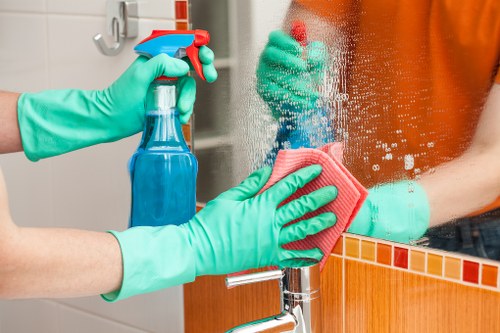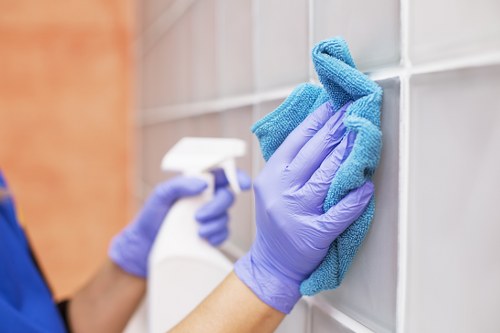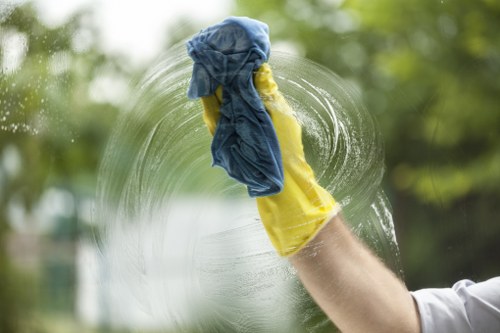Mastering Bathroom Cleaning at the Temple: A Comprehensive Guide

Maintaining a clean and serene bathroom in a temple is essential for both hygiene and spiritual ambiance. A spotless bathroom not only ensures the health and safety of worshippers but also reflects the sanctity of the temple. This guide delves into effective strategies and best practices for bathroom cleaning at the temple, ensuring that every visit is a pleasant experience.
Understanding the unique requirements of a temple’s bathroom is crucial. Unlike typical household bathrooms, those in temples handle a higher volume of visitors and often adhere to specific cultural and religious standards. Therefore, implementing a structured cleaning regimen is paramount.
In this article, we will explore the essential steps for maintaining temple bathrooms, the best cleaning products to use, and tips for creating a sustainable cleaning routine that honors the sanctity of the space.

The Importance of a Clean Bathroom in a Temple
A clean bathroom in a temple serves multiple purposes. Firstly, it ensures the health and well-being of all visitors by minimizing the spread of germs and maintaining a hygienic environment. Secondly, it upholds the temple’s reputation by providing a comfortable and pleasant experience for worshippers.
Moreover, a spotless bathroom reflects the temple’s commitment to cleanliness and order, which are often integral to spiritual practices. Visitors are likely to feel more at ease and focused on their spiritual activities when the facilities meet high cleanliness standards.
Additionally, regular maintenance of temple bathrooms can prevent major cleanliness issues, saving time and resources in the long run.

Essential Cleaning Supplies for Temple Bathrooms
Having the right cleaning supplies is crucial for maintaining temple bathrooms effectively. Below is a list of essential items:
- Disinfectants: To eliminate germs and bacteria.
- All-purpose Cleaners: For general cleaning tasks.
- Glass Cleaners: To keep mirrors and glass surfaces spotless.
- Bathroom-Specific Cleaners: Designed for tiles, sinks, and toilets.
- Cleaning Tools: Including brushes, mops, sponges, and microfiber cloths.
- Air Fresheners: To maintain a pleasant scent.
- Protective Gear: Gloves and masks for cleaners’ safety.

Step-by-Step Cleaning Process
1. Preparation
Before starting, ensure you have all necessary cleaning supplies. Wear protective gear to safeguard against harsh chemicals. Remove any personal items or clutter from the bathroom to streamline the cleaning process.
Ventilate the area by opening windows or turning on exhaust fans. This helps in dispersing chemical fumes and moisture, creating a safer and more comfortable environment.
Gather information about any specific cleaning protocols required by the temple, ensuring compliance with cultural or religious practices.
2. Cleaning the Toilet
Begin by applying a toilet cleaner inside the bowl. Use a brush to scrub thoroughly, paying attention to under the rim and other hard-to-reach areas. After scrubbing, flush the toilet to rinse away the cleaner and debris.
Wipe down the exterior of the toilet, including the seat, lid, and base, with a disinfectant cloth. Ensure all surfaces are sanitized to prevent the spread of germs.
3. Cleaning the Sink and Countertops
Spray an all-purpose cleaner on the sink and countertops. Use a sponge or cloth to wipe away any soap scum, grime, or toothpaste residue. Pay special attention to faucet handles and drains, where bacteria can accumulate.
Rinse the surfaces with clean water to remove any cleaner residue. Dry with a microfiber cloth to prevent water spots and streaks.
4. Cleaning Mirrors and Glass Surfaces
Apply a glass cleaner to mirrors and any other glass surfaces in the bathroom. Use a lint-free cloth or paper towels to wipe them clean, ensuring there are no streaks or smudges left behind.
For stubborn spots, allow the cleaner to sit for a few minutes before wiping.
5. Mopping the Floor
Start by sweeping or vacuuming the bathroom floor to remove loose dirt and debris. Then, use a mop with a suitable floor cleaner to wash the tiles. Focus on corners and edges where dirt tends to accumulate.
Allow the floor to dry completely before replacing any items or allowing use.

Maintenance Tips for a Pristine Bathroom
Consistent maintenance is key to keeping temple bathrooms clean and inviting. Here are some tips:
- Regular Cleaning Schedule: Establish a routine cleaning timetable to ensure all areas are addressed regularly.
- Restocking Supplies: Keep essential supplies like soap, paper towels, and toilet paper well-stocked.
- Prompt Spill Cleaning: Address any spills or messes immediately to prevent stains and buildup.
- Ventilation: Ensure proper ventilation to reduce moisture and prevent mold growth.
- Inspections: Conduct periodic inspections to identify and address any maintenance issues promptly.
Eco-Friendly Cleaning Practices
Embracing eco-friendly cleaning practices not only benefits the environment but also aligns with the temple’s commitment to harmony and respect for nature.
Consider using natural cleaning agents such as vinegar, baking soda, and lemon juice. These alternatives are effective at cleaning while being safe for both users and the environment.
Additionally, implementing water-saving techniques, like using bucket mops instead of continuous running water, can contribute to sustainability efforts.
Training and Involvement of Staff
Proper training for cleaning staff ensures that bathroom maintenance meets the temple’s standards. Provide comprehensive training on the correct use of cleaning products, safety protocols, and effective cleaning techniques.
Encourage staff to take pride in their work by fostering a respectful and motivating work environment. Recognizing their efforts can lead to better performance and a more pristine bathroom.
Local Relevance: Cleaning Temples in Nearby Areas
Maintaining bathroom cleanliness is not just limited to the main temple; nearby temples also benefit from these practices. Here are some nearby areas to Temple where bathroom cleaning is paramount:
- Grandview Temple: Just 2 miles away, known for its serene gardens and spotless facilities.
- Lakeside Temple: Located 3 miles from Temple, it emphasizes eco-friendly cleaning methods.
- Hilltop Temple: 4 miles away, famous for its panoramic views and immaculate bathrooms.
- Riverside Temple: Situated 5 miles from Temple, it prioritizes regular maintenance schedules.
- Sunnyvale Temple: 6 miles out, known for its modern amenities and clean restrooms.
- Maplewood Temple: 7 miles away, it integrates traditional cleaning practices with modern techniques.
- Oakcrest Temple: 8 miles distant, renowned for its spacious and well-kept bathrooms.
- Pinehill Temple: 9 miles from Temple, it focuses on sustainable cleaning solutions.
- Brookside Temple: 10 miles out, famous for its community-driven cleaning initiatives.
- Elmstone Temple: 11 miles away, it offers pristine facilities complemented by dedicated staff.
- Willowbrook Temple: 12 miles from Temple, known for its detailed cleaning routines and spotless bathrooms.
- Cedar Grove Temple: 13 miles away, it maintains high cleanliness standards through regular inspections.
- Birchwood Temple: 14 miles out, celebrated for its clean and inviting bathroom spaces.
- Redwood Temple: 15 miles from Temple, it combines traditional values with effective cleaning practices.
Conclusion
Maintaining clean bathrooms in temples is a vital aspect of ensuring a welcoming and hygienic environment for all visitors. By following a structured cleaning process, using the right supplies, and adopting eco-friendly practices, temple administrations can uphold the sanctity and cleanliness of their facilities.
Moreover, extending these practices to nearby temples fosters a community of cleanliness and respect, enhancing the overall spiritual experience for worshippers across the region.
Frequently Asked Questions
1. How often should temple bathrooms be cleaned?
Temple bathrooms should be cleaned at least twice daily to ensure hygiene and comfort for all visitors. High-traffic areas may require more frequent attention.
2. What are the best eco-friendly cleaning products for temples?
Natural ingredients like vinegar, baking soda, and lemon juice are excellent for eco-friendly cleaning. Additionally, products labeled as biodegradable and non-toxic are ideal for maintaining a sustainable environment.
3. How can we maintain cleanliness between regular cleanings?
Encouraging visitors to keep the bathroom tidy by disposing of waste properly, using provided cleaning wipes for spills, and ensuring adequate ventilation can help maintain cleanliness between scheduled cleanings.
4. What safety measures should cleaning staff follow?
Cleaning staff should wear appropriate protective gear, follow proper handling instructions for cleaning chemicals, and adhere to safety protocols to prevent accidents and ensure their well-being.
5. How can we involve the community in maintaining temple bathroom cleanliness?
Engaging the community through volunteer cleaning programs, providing feedback channels, and fostering a sense of shared responsibility can encourage collective efforts in maintaining clean and welcoming bathroom facilities.